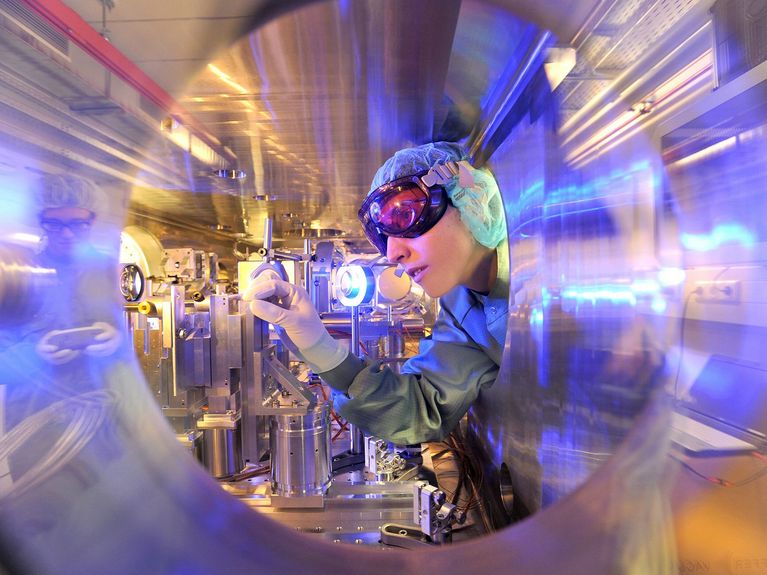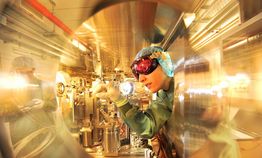
Story #25
Particle Turbochargers: Laser-plasma Accelerators for Physics and Medicine
Accelerating particle beams to near-light speed in a short distance – thanks to high-performance lasers, what sounds like science fiction is now very real in plasma acceleration. This revolutionary technology opens exciting avenues for basic research, medicine, and inertial confinement fusion.
For nearly two decades, the experts at the Helmholtz-Zentrum Dresden-Rossendorf (HZDR) have been working to develop compact, laser-based particle accelerators. To do so, they use extremely intense pulses of light to generate plasma waves, which accelerate charged particles to tremendously high speeds. Originally, these compact proton beams were primarily intended for innovative cancer treatments. The researchers cleared a major milestone in 2012, when they delivered the first dose-controlled irradiation of tumor cells. In 2021, this was followed by the successful treatment and testing of tumors in mice.
These advances were made possible by the continuous and collaborative development of high-performance lasers and particle accelerators at Helmholtz. It also yielded a major breakthrough in 2020: significantly higher proton energy and stability. The resultant proton pulses are extremely intense but very brief, which means they can be used on biological tissue in unprecedentedly high doses – and means this “FLASH irradiation” could be a promising approach for more precise tumor treatments that don’t harm healthy tissue.
Extreme Zustände im Labor
Using their high-performance laser DRACO, the HZDR researchers have set new standards. In the interim, comparable systems have proven their value as tools for reliably generating laser-based proton and electron beams. The energy-efficient laser PENELOPE promises to deliver even higher-energy protons and move plasma acceleration forward. Using PENELOPE as the basis, the HZDR, Helmholtz Institute Jena, GSI Helmholtzzentrum für Schwerionenforschung and Deutsches Elektronen-Synchrotron (DESY) plan to create a flexible platform for innovative particle accelerator technologies in the ATHENA project.
The envisioned applications range from compact electron accelerators as injectors for storage rings and light sources (DESY) to their direct use as the “motors” of free-electron lasers (HZDR). By applying Machine Learning methods, substantial advances have been made in the past several years, especially in the stabilization of nonlinear plasma processes.
And precisely this behavior of dynamic plasma instabilities is of central importance for accelerator technologies, astrophysical processes, and the development of fusion reactors. For the past few years, experts have been studying these phenomena at the Helmholtz International Beamline for Extreme Fields (HIBEF), where they combine theory, simulations and experiments to gain a better grasp of the complex interactions between laser and plasma. To do so, they use coherent X-ray pulses at European XFEL to investigate solid-density plasmas at unparalleled resolutions.
Through all these approaches, the experts of the Helmholtz Association are making valuable contributions to advancing plasma acceleration – for more precise cancer treatment options and a better understanding of the extreme states of matter.
Picture: Frank Bierstedt/HZDR
Participating centers
Wie lassen sich Energie und Ressourcen effizient, sicher und nachhaltig nutzen? Wie können wir Krebserkrankungen besser visualisieren, charakterisieren und wirksam behandeln? Und Wie verhalten sich Materie und Materialien unter dem Einfluss hoher Felder und in kleinsten Dimensionen? Es sind genau solche Fragen, die die Wissenschaftler*innen des Helmholtz-Zentrums Dresden-Rossendorf (HZDR) antreiben.
